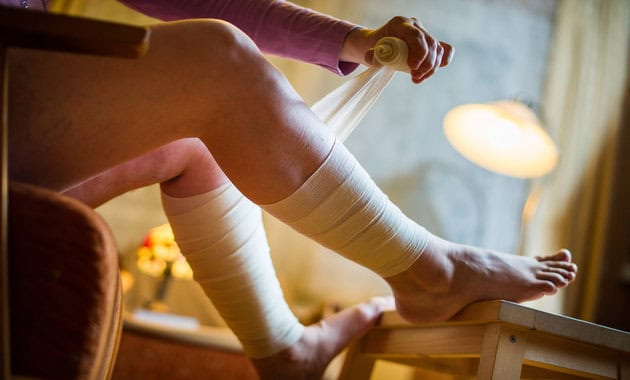Varicose veins are swollen and twisted veins most commonly seen in lower legs and thighs. Varicose veins are visible superficially, as light green or dark bluish-purple, spider-like threads running right under the skin. They are commonly associated with swelling of legs, dull leg pain and pigmentation.
What Causes Varicose Veins?
Some of the common reasons for development of varicosity in veins are-
Increase in the blood pressure in veins, a defect in the valves of the veins, loss of elasticity of the walls of veins, standing for long hours ( example surgeons, hairdressers, air hostess), being overweight and pregnancy.
These factors lead to accumulation of venous blood in the veins and inflammation. This leads to the symptoms of varicose veins. As the condition progresses complications such as varicose ulcers, deep vein thrombosis and chronic venous insufficiency can arise.
How Can You Manage Varicose Veins Better?
Symptoms often restrict daily routine and may even affect work performance especially in professions which require prolonged standing. Various measures are available to reduce the pain and prevent disease progression. These include:
-Use stockings or bandages, as external compression to improve blood circulation and relieve pain.
-Keep legs in an elevated position above the level of the heart, to promote draining of accumulated blood towards the heart.
-If you are sitting or lying down, ensure you rest the legs on a footstool or chair.
-Avoid continuous long hours of standing or sitting position.
-Mak sure you move your legs every 15 to 20 minutes during long periods of sitting or standing. Muscle contraction during movement of legs help in the pumping of blood towards the heart and prevents pooling of blood in veins.
-Include exercises such as walking, jogging, which strengthen calf muscles. These muscles are important to ensure good pumping of blood back to the heart from the legs.
-Maintain an appropriate weight for your age and height. Being overweight increases the effort against which the veins have to pump blood to the heart against gravity, making you prone to varicose veins.
–Avoid wearing high-heeled footwear and sitting crossed legged as it may aggravate the condition.
-You may use hot water bag or an electric heating pad on the painful area for 10-15 minutes, 2-3 times a day, or as and when needed to achieve pain relief.
–Horse chestnut seed extract has shown to reduce swelling over the legs and may be used under supervision with a general physician.
What Are the Treatment Options For Varicose Veins?
1 . Laser therapy is a commonly used procedure for treating varicose veins. A beam of laser rays is aimed at dilated veins which scar them and blocks them forever.
2 . Sclerotherapy is a technique in which the varicose veins are permanently blocked by injecting a special chemical inside them through the skin. It is a quick, OPD procedure taking less than an hour at the doctor’s clinic.
3 . Varicose veins might be removed from the leg by a surgery called phlebectomy if laser and sclerotherapy do not resolve the symptoms.
4 . Large dilated veins can also be blocked using radio frequency waves.
5 . Surgery involving tying and stripping the veins is done in cases of large varicose veins.
